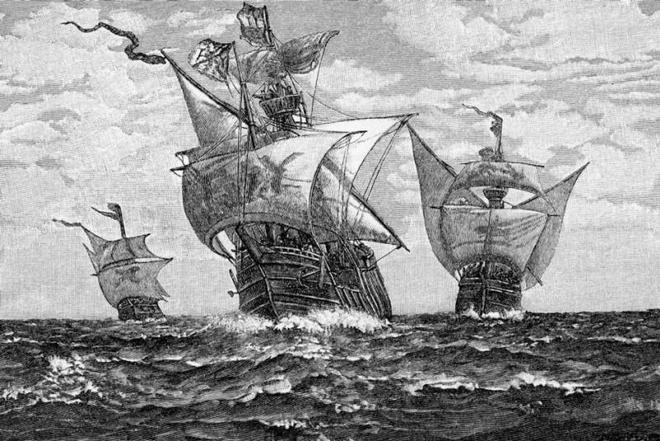Why haven't we found Columbus' ships?
by Kristin Romey / National Geographic on 15 Oct 2017

The ships of Christopher Columbus's First Fleet—the flagship Santa Maria flanked by Niña and Pinta—are depicted in this undated woodcut. Only the fate of Santa Maria is known. Bettman, Corbis / Getty Images
This year marks the 525th anniversary of Christopher Columbus's first Transatlantic expedition, a voyage that the Italian explorer expected would take him to Asia. Instead, his crew sighted land in the Caribbean on October 12, 1492, setting in motion a series of events that would lead to the European colonization of the New World.
While generations of school children have sung of the adventures of the 'Niña, the Pinta, and the Santa Maria too,' the remains of Columbus' history-making First Fleet—as well as those of his subsequent three expeditions—remain undiscovered, despite decades of dedicated searching by archaeologists and shipwreck hunters alike.
Here are some of the reasons why finding the remains of the First Fleet is so difficult:
The conditions are lousy for ship preservation
The warm waters of the Caribbean are paradise for teredo worms, which are actually mollusks with a voracious appetite for wood. Also known as shipworms and 'termites of the sea,' these creatures can devour an exposed wooden wreck within a decade and are the arch-nemesis of underwater archaeologists working in the region.
Any wooden vessel that resisted the predations of shipworms would also have to survive five centuries of tropical storms and hurricanes in shallow waters, observes Donald Keith, an archaeologist who has searched for Gallega, a ship from Columbus's Fourth Fleet which disappeared in 1503. 'Ships lost in cold, dark, deep water have a much better chance of staying intact and maintaining their 'time capsule' value.'
Read full article
here.
If you want to link to this article then please use this URL: www.sail-world.com/158026

